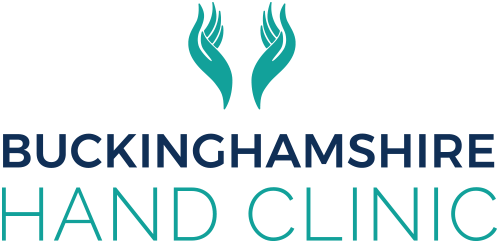The field of hand and wrist surgery has developed into a specialty of its own with tremendous progress in the understanding of the anatomy and biomechanics. There has also been a significant advance in our understanding of the pathology of conditions affecting the hand and wrist.
Movements of the hand and wrist are integral to many activities of daily living, work, hobbies and sports. The functional activities of tendons, muscles, nerves, blood vessels and the joints are intricately connected and finely balanced. These structures are covered by highly specialised skin which not only provides protection but also is crucial to grip and sensory perception. Any change in one of the structures is therefore likely to affect the hand as a whole.
Trigger Fingers
Twenty two tendons cross the wrist from the forearm to provide strength and dexterity. The tendons that curl the fingers and the thumb towards the palm (flexor tendons) pass through a series of tunnels formed by pulleys. They stabilise the tendons during gripping activity and maintain their position close to the joint to achieve mechanical efficiency. Trigger digit (finger or thumb) usually occurs when there is a slight thickening of the pulley or the tendon and tightness (stenosis) as it enters the one of the tunnels in the palm (the A1 pulley).
It occurs more often in females and the ring finger is most commonly affected. Middle finger and thumb are also frequently affected. In most cases, it occurs in otherwise normal and healthy individuals but is common in diabetics in whom multiple fingers may be affected. It may sometimes be related to inflammation of the tendon sheath in rheumatoid arthritis and a condition called ‘amyloidosis’ in patients on long-term renal dialysis.
In the early stages, pain or discomfort may be the only symptom. Typically, the finger clicks during bending and may catch or ‘trigger’ while straightening it. As the severity increases, one may have to push the finger straight using the other hand and in very severe cases, the finger may get ‘locked’ and it is not possible to straighten it.
Triggering sometimes resolves spontaneously in mild cases and no treatment may be needed apart from reassurance. Splints may be beneficial but are often restrictive. Steroid injection into the tendon sheath provides long-term relief in two-thirds of cases. Occasionally two or three injections may be needed. Steroid injections are less effective in patients with Type 1 (insulin dependent) diabetes. Surgery (release of the pulley) is indicated for persistent or severe cases.
Trigger Finger (thumb) Release
The operation is performed as a day case usually under local anaesthesia. General anaesthesia may sometimes be needed for the thumb. Several types of skin incisions have been described. I prefer a longitudinal incision. The A1 pulley is identified and carefully divided protecting the adjacent nerves and blood vessels. In an awake patient, successful release can be confirmed immediately by asking them to move the finger. Skin incision is closed with absorbable or non-absorbable sutures.
After-care and recovery: Finger movements and use of the hand for light activities are commenced straightaway.
Simple painkillers like paracetamol and ibuprofen for 3-4 days is often all that is needed to avoid pain. It is important to take the painkillers soon after the operation and before the local anaesthetic has worn off for best results. The hand should be kept elevated for at least 4-5 days to reduce the risks of swelling and stiffness.
The wound should be kept dry and clean to reduce the risk of infection for at least a week. If non-absorbable sutures are used, they are removed after 10-12 days.
Once the wound has healed, scar massage and exercises will aid recovery. These can be performed at home or under the guidance of a hand therapist. Most people can resume driving after 10 days. You will be seen in the clinic around 2 weeks after surgery.
Scar discomfort usually settles in 2-3 weeks but can occasionally linger on for up to six weeks. It is common to feel discomfort whilst leaning on the scar (gripping) or stretching it. In long-standing or severe cases and in diabetics, mild stiffness in the finger joint may remain. Recurrence is uncommon. Individuals with an associated underlying condition (diabetes, rheumatoid arthritis, renal dialysis) are more prone to recurrence.
